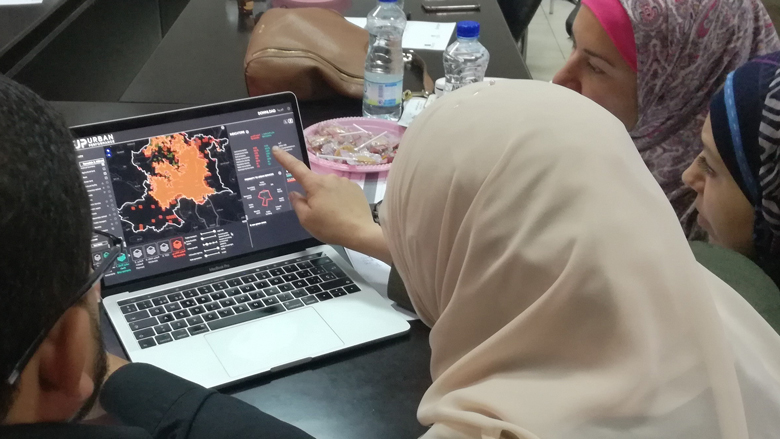
Just when you think it is impossible…
Traffic congestion, trash collection, water shortages, operating costs. These are very real challenges that mayors, city managers, urban planners, and engineers face when trying to create livable places for their citizens. The situation is no different in the Palestinian territories.
Add to these one of the world’s highest population densities (and high annual population growth rates), along with very minimal space to grow and limited financial resources. Set all this within a fragile-and-conflicted-affected area, one would think it is impossible to plan or do anything. That is not the case.
Bethlehem, Ramallah-Al Bireh, Nablus, Hebron, and Gaza City are the five, leading urban economic areas in the West Bank and Gaza. The local authorities of these areas are experiencing rapid growth. They know they need to develop quality urban environments, provide adequate public services, and facilitate economic growth and job creation. With support from the World Bank’s Integrated Cities and Urban Development (ICUD) Project, these five cities, along with the Ministry of Local Government, have begun planning for sustainable urban growth.
The first step has been to improve intra-urban area coordination among the local government units (LGUs) that comprise each agglomeration. Through joint coordination units, the LGUs are working on integrated, metropolitan approaches to city management and adopting innovative ways to do so.
Through the ICUD project, the areas have adopted a new urban modeling tool called Urban Performance (UP). The tool can forecast the results of certain policies, projects, and initiatives (policy levers) the cities could implement to address their urban challenges.
World Bank’s Integrated Cities and Urban Development (ICUD) Project
By utilizing geospatial and numeric data, the UP tool provides quantitative results for tested policy levers, including infrastructure costs and the levels of water, energy, and land consumption, greenhouse gas (GHG) emissions, and green areas per capita. With this tool, the five urban areas mentioned were able to develop and test different growth options for the cities. These “urban growth scenarios” model a combination of urban expansion, compact growth, and moderate infill, along with sectoral projects like new public transportation routes, wastewater treatment plants, and energy efficiency measures.
A tool to simulate optimal choices
Urban Performance is timely: it helps inform climate mitigation measures for the development of city policies. The Co-Benefits of this are related to energy efficiency and energy diversity, and the emissions of greenhouse gasses. It allows decision makers and city practitioners to compare—and contrast—different options for urban policies.
For example, the Nablus urban area was able to see that adopting a policy of compact growth would lead to minimized land consumption and, also, to reduced energy consumption and a reduction in greenhouse gas emissions and overall costs. The tool helped the Bethlehem area, as well, assess that the annual savings from the lower running costs of using LED technology for public lighting could help to cover the cost of building 43 new public parks in less than two years.
The tool has now been fully embedded within the systems of the local authorities for short- to long-term planning. West Bank & Gaza is the first country in MENA to utilize scenario modeling within their systematic, urban policy, and development practices. This activity demonstrates that despite highly constrained environments within fragile and conflict affected areas, innovative planning tools can be used to support urban planning and the delivery of public services to citizens.
Document Sources: World Bank
Subject: Annexation, Economic issues, Gaza Strip, West Bank
Publication Date: 29/06/2020
URL source: https://www.worldbank.org/en/news/feature/2020/06/29/urban-innovation-in-palestinian-cities

